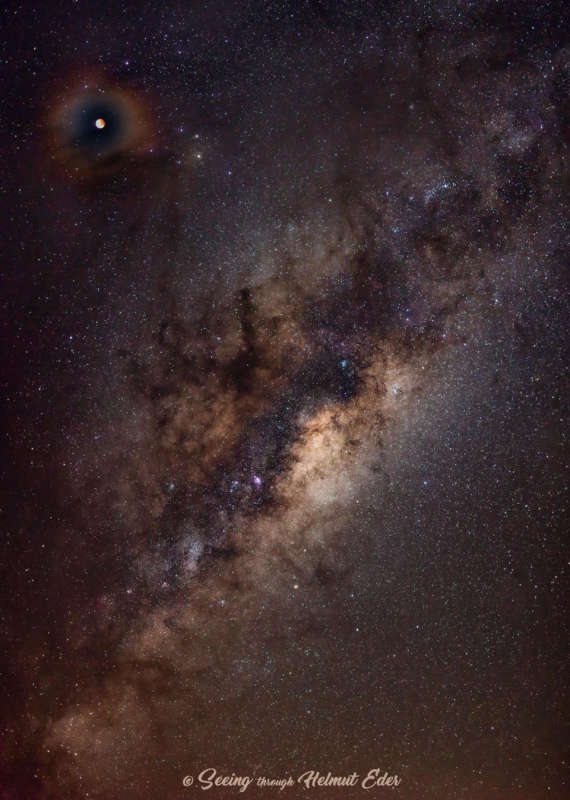
|
Credit & Copyright: Helmut Eder
Explanation:
This moon appears multiply strange.
This moon was a full moon, specificallyácalled a
Flower Moon at this time
of the year.
But that didn't make it strange -- full moons occur once a month
(moon-th).
This moon was a
supermoon,
meaning that it reached its full phase near its closest approacháto the Earth in
its slightly
elliptical orbit.
Somewhat strange, a supermoon appears a bit larger and brighter than the average
full moon --
and enables it to be called a Super Flower Moon.á
This moon was undergoing a
total lunar eclipse.
An eclipsed moon can look
quite strange, being dark,
unevenly lit, and, frequently, red -- sometimes called
blood red.
Therefore, this moon could be called a Super Flower Blood Moon.
This moon was seen through thin clouds.
These clouds created a
faint corona
around the moon, making it look not only strange, but
colorful.
This moon was imaged so deeply that the
heart of the
Milky Way galaxy, far in the background, was visible to its lower right.
This moon, this shadow, this galaxy and these colors were all
captured last month near
Cassilis,
NSW,
Australia -- with a single
shot. (Merged later with two lower shots that better capture the Milky Way.)
Details:
Annular Solar Eclipse
Tomorrow
Gallery:
Total Eclipse of the Super Flower Blood Moon
|
January February March April May June July August September October November December |
| ||||||||||||||||||||||||||||||||||||||||||||||||
NASA Web Site Statements, Warnings, and Disclaimers
NASA Official: Jay Norris. Specific rights apply.
A service of: LHEA at NASA / GSFC
& Michigan Tech. U.
Based on Astronomy Picture
Of the Day
Publications with keywords: total lunar eclipse
Publications with words: total lunar eclipse
See also:
